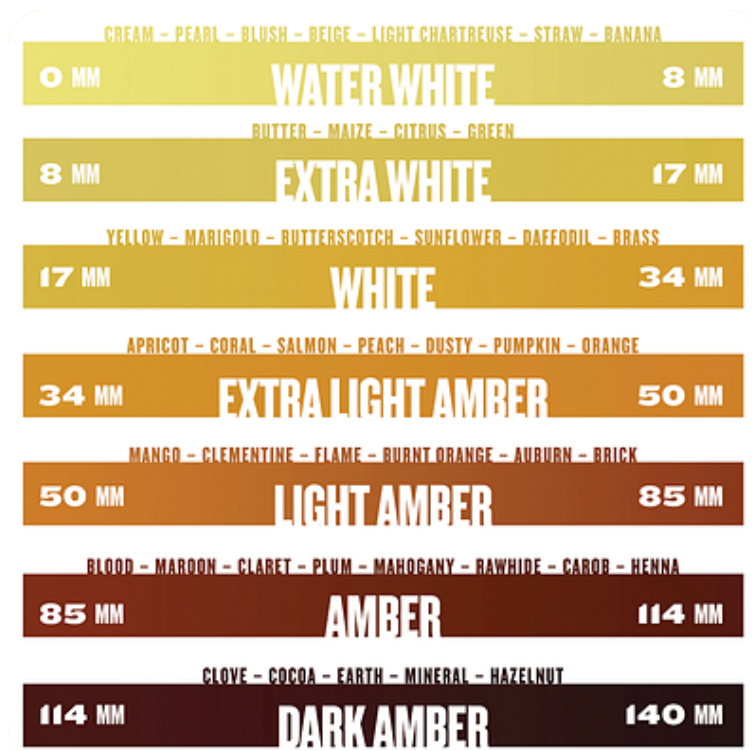Honey Color and Flavor
It all depends on where the bees buzz…….
The color and flavor of honey will vary depending on the nectar source (the blossoms) visited by the honeybees. There are more than 300 different types of honey available in the United States, each of these originating from a different floral source. Honey color ranges from nearly colorless to dark brown, and its flavor varies from delectably mild to distinctively bold depending on where the honeybees foraged. Typically, light-colored honey is milder in taste and dark-colored honey is has a stronger taste.
The USDA classifies honey into seven color categories as noted below but doesn’t include this in the calculation of their grading system:
· Water white
· Extra white
· White
· Extra light amber
· Light amber
· Amber
· Dark Amber
While color is not included in the USDA grading system, many producers, packers, and consumers of honey are interested in the color for a variety of reasons. Looking at the USDA color categories “White” is a category that may not make sense as the honey is not white but colorless, similar to how white vinegar, which is also colorless, is described.
How you determine the color coding is also interesting; color is graded on a continuous scale called the Pfund scale. A Pfund color grader is just a standard, amber-colored glass wedge that goes from light to dark with the color bands expressed in different millimeter measurements. These measurements correlate to optical density of the honey. For example, by looking at the White category on the scale you will see it ranges from 17mm to 34mm – by sliding the honey across you can match up the color.
If you are looking for a more scientific measurement method, you could always use the Lovibond visual comparator (Association of Official Analytical Chemists). A beam of light is passed through the honey and the color is compared to a standard; basically the same system used to determine the color of beer – there is a lot to like about that!
If you are interested in the color from a human health perspective, darker honey is usually higher in antioxidants than lighter honeys. For example, in a study done at the University of Illinois buckwheat honey was found to have 20 times as many antioxidants as sage honey.
So where did our honey fall on the scale? Our light honey harvested Memorial Day registered on the upper end of the White and our amber honey harvested on July 4th registered on the upper end of the light amber.
The Pfund Scale

